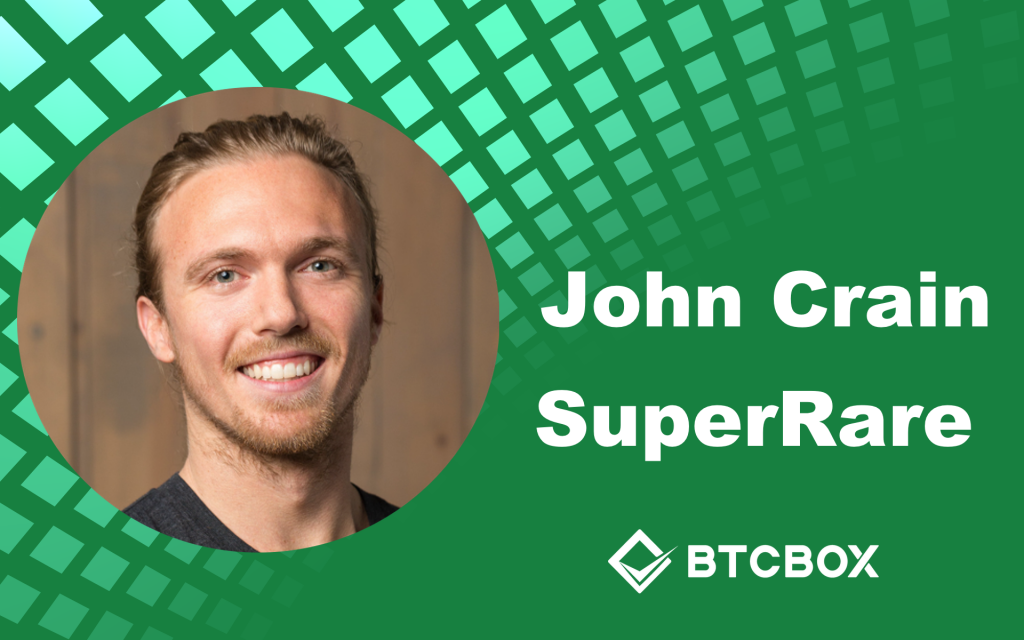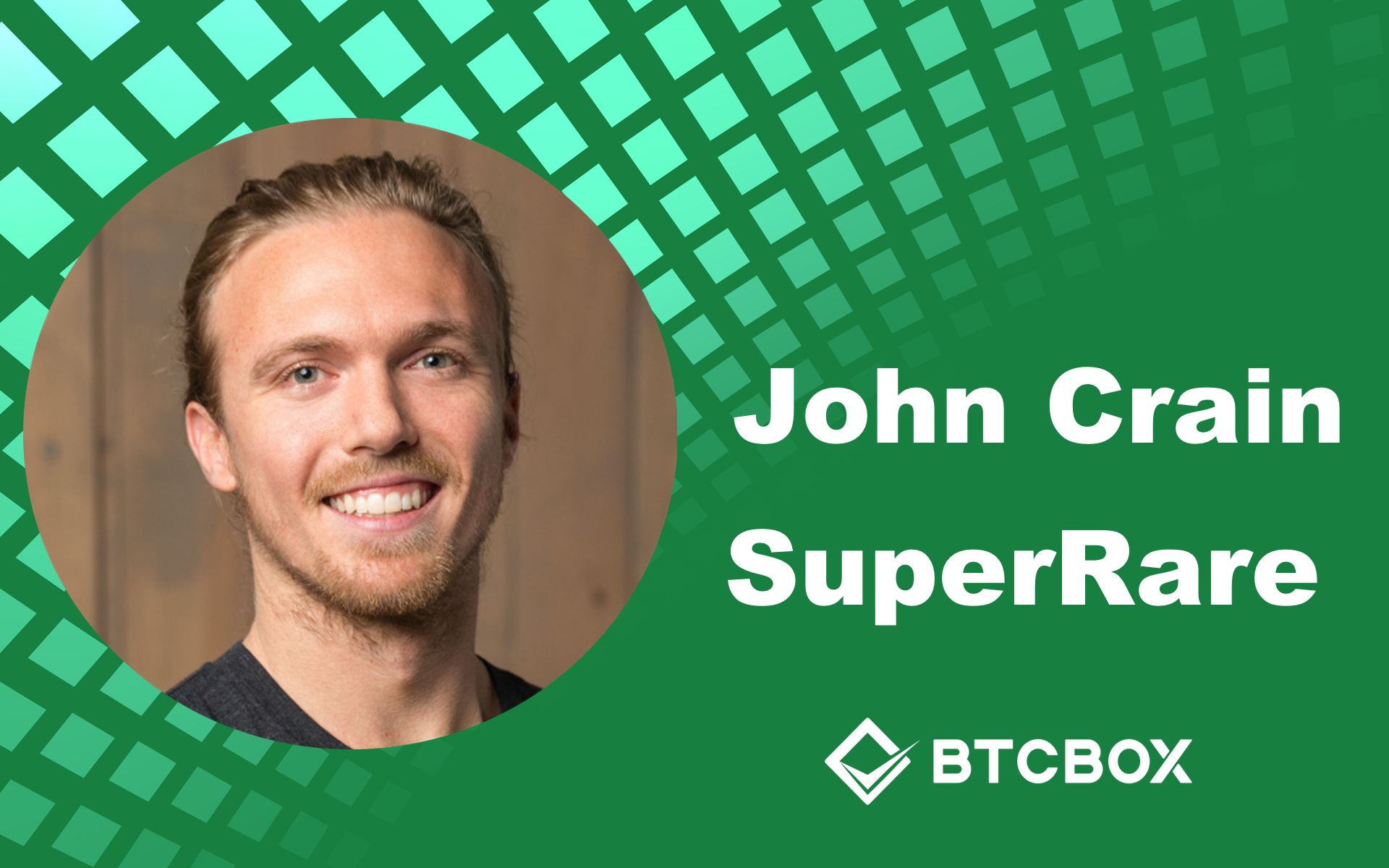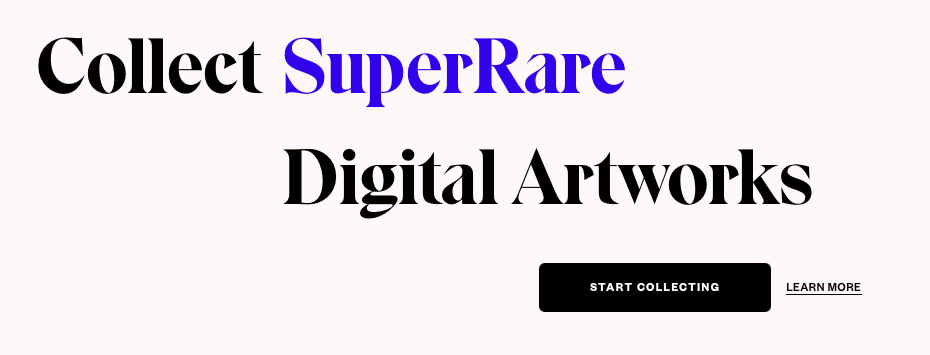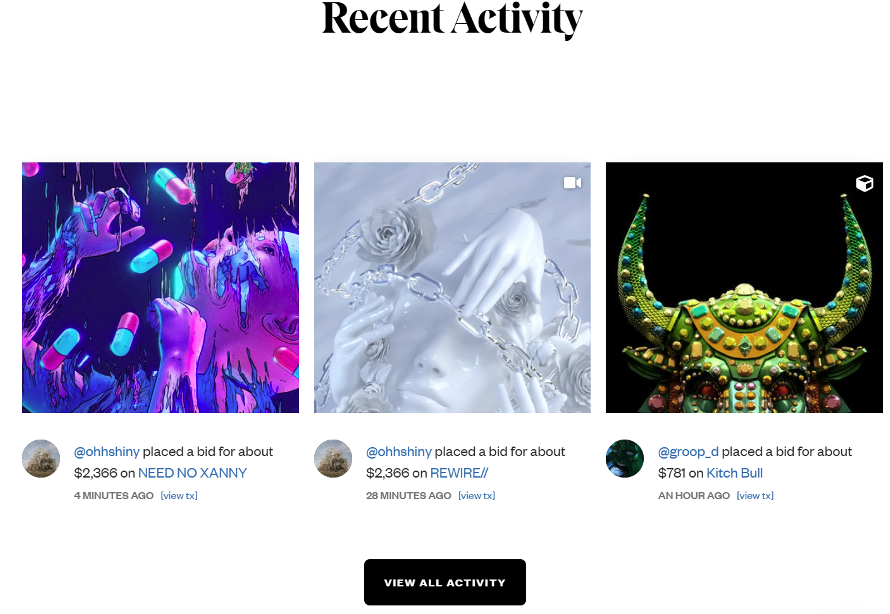
We had the pleasure to interview John Crain, the co-founder CEO of SuperRare, a platform for Digital Art Buying, Selling and Auctioning using NFTs on the Ethereum Blockchain. Today, it has become a social network for art creators and collectors, backed by blockchain. Prior to SuperRare, John led product for the ConsenSys as a Product engineer exploring use cases for smart contracts and leveraging open data. This time, we discuss the art space in the crypto sphere, how it has evolved in a very short time, and how much more it can spread. Please take a look.
John Crain(the co-founder CEO of SuperRare)
Interview Date : 11th November 2020
My name is John Crain, and I am the CEO of SuperRare. SuperRare is the world’s best platform for digital art collecting on top of the Ethereum blockchain. We are building the future of art collecting by giving digital artists and digital art collectors the tools they need to display their arts or collect wonderful art pieces.
What was your motivation?
I was very interested in generative art in college. Generative art is using computers, programming, and processing to create art. After a few years, I found Bitcoin and Ethereum and got very interested in the technology. I found this new concept or digital currencies where have programmable money and value on the internet very interesting. I got kind of obsessed with Ethereum, and this eventually leads me to think about how to use this new technology to build new and interesting business models for people, and especially for artists. If you look at platforms like YouTube, Instagram, etc. they capture the majority of the value being created. We were trying to figure out how we can build a platform that can give value back to users?” That was the genesis of SuperRare.
Why Choose Ethereum for SuperRare?
I tried to do some programming on Bitcoin, but it was pretty challenging. Although the scripting language is very simple, it is still really hard to use. However, with Ethereum, it was way more flexible. Thinking through how we wanted SuperRare to operate as a platform, Solidity was interesting in that you could, for example, program royalties, interact with artists on the secondary market place, etc. All those functions and features really just take a little bit of coding, but in return, you get this powerful concept. It makes for a fairer and more equitable ecosystem. Thus, just the simplicity, being able to write the code, and the power of having that redirect funds and ownership was pretty fascinating.
Ethereum and Bitcoin Have Different Functions
I think Bitcoin is super interesting, and it was the first coin to emerge and create this whole space. However, Bitcoin is focused on being digital money, and it is doing a great job. With Ether, it is less clear what an Ether is used for. Some people use it as digital money, whereas others are using it for applications and Dapps. Hence Ether is still finding itself. On the contrary, Bitcoin has been around for a while and has somewhat matured as a technology. So, depending on what you are looking for, for example, a digital asset, a function, feature, or a platform, the uses of those two have become clearer in recent years.
How to Register and Become an Artist
For artists, we have an open application process. Thus, anybody can reach out to us, get on our radar, and let us know who they are, what their art is about, and what kind of practice they have. We have a curation team who is made of people from SuperRare and also artists from the community. They continually go through artist applications. However, our process is manual and cannot let everybody onboard. However, as SuperRare matures, we will be able to have more and more artists on the platform.
A lot of the artists on our platform are people who are digitally native, meaning these are people who are experienced with digital art. They do motion graphics, or virtual reality (VR) sculpture, and so much more. There has not been a place for them in the contemporary art market so far, so digital art was kind of a subset of contemporary art and never really took off. We thought that something like an NFT could be a powerful catalyst for a big renaissance in art collecting and digital art appreciation. On the collector’s side, people come to SuperRare because they are interested in what new rare art they can find. There are a couple of different ways to start seeing what everything is all about, but one of the most popular ways to do that is through our activity feed, which is like Instagram in that it is a live stream of everything that is happening on SuperRare. For example, you can see if a new bid is coming or if an artist creates a new piece of art. Once you have an idea of the types of art on the platform, you can go to a marketplace that is more like a tool to find a specific type of art and make a purchase.
NFT and Art
NFT, Non-Fungible Token, is a token standard. The main feature of an NFT is that it has a unique ID. If you mint an NFT, you will have a unique ID for a given set of data. You will be able to see specifically who is using the specific token, and where it is. If I sent it to you, you will also be able to track that it has been transferred. Thus, the unique ID of the NFT is why it is interesting for art and the art world. NFT’s provide provenance, meaning it makes it possible to track its history. You can see who has ever owned the art piece, when it was created, is it the real piece or not, etc. By confirming that, we can reduce the amount of forgery which is pretty prevalent in art.
All the artists at SuperRare create their own NFTs, and you as a visitor or collector can check which address created the NFT, what date and time it happened, and much more. The novel component of this system concerning art is the provenance it provides. Also, this open-source dataset about the art is almost free for the ones using the system. Besides, they provide scarcity to art. So, I like to think about the NFT as a certificate of authenticity; it has a fingerprint of what the piece of art is. This type of provenance service for the artists and collectors is pretty challenging in the physical art world to get. You can take your art file with all the information about it, sign it, create a hash, store that in a token on the blockchain, the NFT has been created. This certificate is something nobody can forge, reproduce, or copy and paste. So, there will be just 1 piece of it, and only one person can own it at a time, thus providing digital scarcity.
How Do Artists Price Their Art?
Pricing happens in an open market, and there are a couple of different ways. It’s pretty common for artists to run auctions. When they create a new piece of art, they use our SuperRare auctioning system to announce their “a new art piece” is up, and everybody can go and look at it and start auctioning. Another way to price it is that you can set a specific price on an art piece.
What happens to older Art pieces and older Tokens?
An interesting trend that we have seen is as these tokens get older, they do generally get up in value. It is not all of them that do, but especially the more well-known artist’s artworks do. Also, just the fact that a piece of art is 2-year-old versus a piece of art that was produced yesterday is looked at differently. There is definitely some similar component to how people think about collectibles in the art to the physical world.
Ether or Dollar?
The actual purchasing mechanics happen with Ether. People are paying in Ether, but a lot of the collectors think in dollars. Collectors can ask or bid, and we record that in the dollar price at the time of the purchase. When artists list the price of an art piece, they list it in Ether, and then we just record how much that would be in dollars. However, the actual transaction is conducted and transacted in Ether.
We were a team of 3 members who co founded SuperRare in April 2018. That is when we first launched the first version of our project on the Ethereum main network. A little later, we bought a fourth member to the team for about 2 years, but it was slow and steady growth. New artists and new collectors were joining, but it was not yet explosive growth.
However, about a year ago is when things really started to take off. I think that had to do with a couple of different things. Firstly, a couple of virtual platforms emerged where people started collecting digital art just to show off. Some of those platforms have become very well-known today, like Cryptovoxels, Decentraland, and Somnium Space. Those were probably the 3 most popular places. I started to see that artists were building VR galleries, and people would come and go to those VR art galleries. This got people interested and made them think “this is incredible immersive art”, and “where is this art coming from?” For the past year when the majority of the growth happened for SuperRare. We are just over 600 artists that we are working with and about 2000 art collectors. Thus, it has definitely been an exciting year.
People from 203 countries are on SuperRare! Art is quite global, and so is art collecting. It is something that anyone can relate to but the traditional sense of art collecting is pretty difficult. If you don’t live by a museum or a gallery, it is kind of hard to get a hold of. There are artists from around the world including Latin America, Southeast Asia, North America, and all over Europe. There was a lot of speculation about where one of our first big collectors was based in, so people went after his Twitter, and we did some detective work too. We found out that he was based in Greece. So, it is pretty interesting, and we do have a great space with a wide range of users and people. We started our hangout social platform on Telegram, but use Discord today, and have 203 countries people originate from who are artists and collectors.
Interviewer , Editor : Lina Kamada
【Disclaimer】
The Article published on this our Homepage are only for the purpose of providing information. This is not intended as a solicitation for cryptocurrency trading. Also, this article is the author’s personal opinions, and this does not represent opinion for the Company BTCBOX co.,Ltd.




